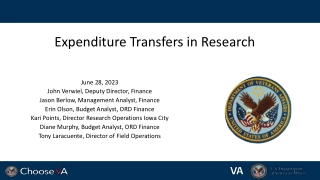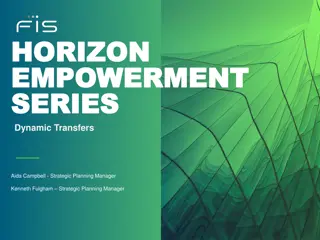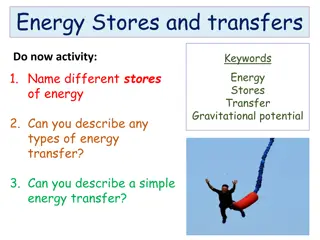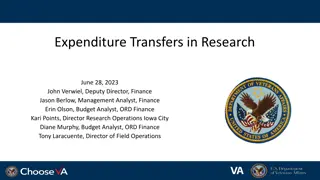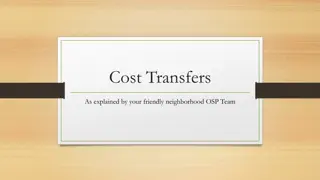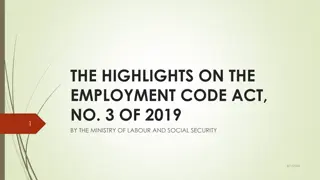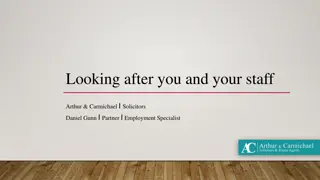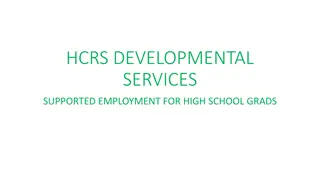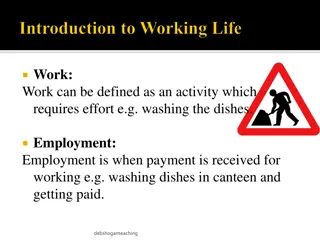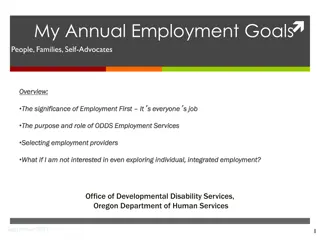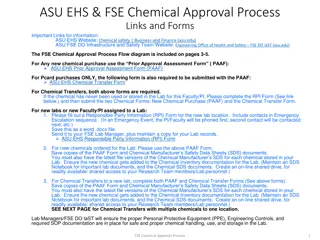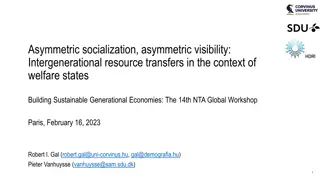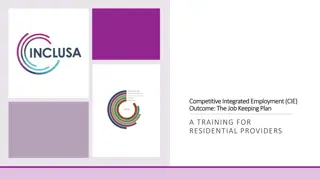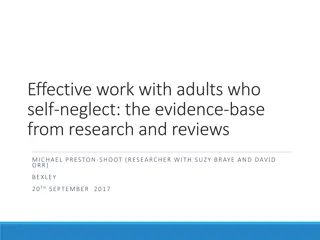Proper Documentation for Self-Employment and Financial Transfers
Discover guidelines for documenting self-employment income, recurring gifts, child support, alimony, and transfers. Learn about required forms for different situations and the importance of thorough documentation.
Download Presentation

Please find below an Image/Link to download the presentation.
The content on the website is provided AS IS for your information and personal use only. It may not be sold, licensed, or shared on other websites without obtaining consent from the author.If you encounter any issues during the download, it is possible that the publisher has removed the file from their server.
You are allowed to download the files provided on this website for personal or commercial use, subject to the condition that they are used lawfully. All files are the property of their respective owners.
The content on the website is provided AS IS for your information and personal use only. It may not be sold, licensed, or shared on other websites without obtaining consent from the author.
E N D
Presentation Transcript
Correctly documenting Self Employment Documenting recurring gifts, child support, alimony Documenting transfers What to count in income Who owns the asset? VOE s, check stubs and the work number Assets less than $5000 on demand accounts
Self Employed persons with an existing business must provide: 1. 2. tax returns (IRS Form 1040 Schedule C for Business Income ) for the preceding calendar year 3. statement existing NV-2c Provide copies of federal income Provide a current current profit and loss
Self Employed persons with a new must provide: 1. NV-2c.1 2. Current Profit and Loss Statement 3. Agree to provide tax returns after year end filing NOTE: request the tax return to document the NV- 2c.1 new business NOTE: Management is responsible for insuring they
Acceptable forms for documenting the above Divorce decree; Please enclose the entire decree and not just the order page, must be able to determine that the decree is for the applicant/resident Court ordered with papers to show the order; Again must have entire document Letter from an attorney or mediator; Documentation from District Attorney s office/support enforcement; Letter from payor Letter must have some form of ID attached or notarized or may be
Are transfers from building to building allowed? Well let s see
Now we have found out the circumstances when we can transfer between buildings, so how do we document it? When a resident transfers from one unit to another the current paperwork goes with them; They retain the same move-in date they had in the original unit; The easiest way to handle the lease is to have them sign an addendum with the new unit number; If they transfer during the year (prior to their move- in anniversary) you would not complete re-cert (1st annual) or alternative cert until the anniversary of their original move-in to the other unit
Paperwork for transfers between units in the same building will be handled exactly the same as ones that are from building to building
If the property cannot transfer residents from building to building (based on the selection made by the owner when issued the 8609 s) Perform a move-out on the current unit; Complete a full move-in certification; There is a new move-in date and a full 1styear annual re-certification is required on the anniversary
All sources of income whether earned or unearned that the household is anticipated to receive in the 12 months following move-in (and the 12 months following recert if property is required to perform recertifications) Are there any exceptions? YES
Earned income of minors 1. Income of Live-in Aides 2. The income of a student that is over the age of 18, not a head or co- head of household, no income is counted after the first $480 3. Income received through a clearly defined job training program that is for a specific limited time period and does not exceed one year for reimbursement of expenses, e.g. childcare, transportation Resident stipend income (cannot exceed $200/month) 4. 5. .
When assets are jointly owned by more than one party it is divided by the amount of owners. The asset could be real estate, trust accounts, checking or savings accounts, valuable collections such as art etc. The resident will need to provide third party documentation that they are not the sole owner.
For example: A checking account with the name of the applicant/resident and another adult that is not a member of the household on it. What needs to be verified? 1. Is this the a/r primary account? 2. Is this the account their income is deposited into? 3. Is the other adult just an emergency signor? A POD? 4. Is the other adult s income being deposited into this account?
Helen Wright is an assisted-housing tenant. She and her daughter, Elsie Duncan, have a joint savings account. Mother and daughter both contribute to the account. They have used the account for trips together and to cover emergency needs for either of them. Assume in this example that state law does not specify ownership. Even though either Helen Wright or Elsie Duncan could withdraw the entire asset for her own use, count Helen's ownership as 50% of the account only.
Incomplete VOEs Not putting the employers name and full contact information at the top. Signature name and reference name/ name inserted by employer differs Not providing the property s contact information VOE not signed by employer
No way to determine it was sent by employer (No fax header or footer, no return envelope if mailed)
When do we need em? 1. When employer does not return VOE 2. When YTD, # of hrs, # of OT hrs, etc. is not answered on VOE 3. To verify commission, bonus, tips etc if employer states included in pay 4. To verify that employer does not track and report tips for employee. (Must provide if using the Tip Affidavit)
How many are required? 4350.3 HUD Occupancy Handbook Chapter 5 says: Owners may not accept pay stubs to document employment income unless the applicant or tenant provides the most recent four to six, consecutive pay stubs to illustrate variations in hours worked.
Internal Revenue Code Sub-section 42 requires that we use the 4350.3 HUD Occupancy Handbook for guidance on calculating income
Work Number Review carefully dates of employment On-site staff should question any discrepancies and clarify them before an applicant moves in. Document, document, document
On demand accounts are savings or checking accounts that can be withdrawn at anytime with no penalties. If an applicant/resident has these types of accounts they must be verified even if less than $5,000. Sooo . What s the difference?
1. Documentation can come straight from the applicant/resident you do not have to contact the institution 2. You will not imput or assign a value to it What does the 4350.3 say you need?
For a checking account: The average balance for the most recent 6mos: This can be in the form of 6 bank statements or many banks show an average balance on the front page of statements. You can accept these from the applicant/resident as long as it clearly shows their info and the institutions info.
For a savings account: The actual amount in the account from the most recent statement. Again, may be provided by applicant/resident you do not need to contact the institution


